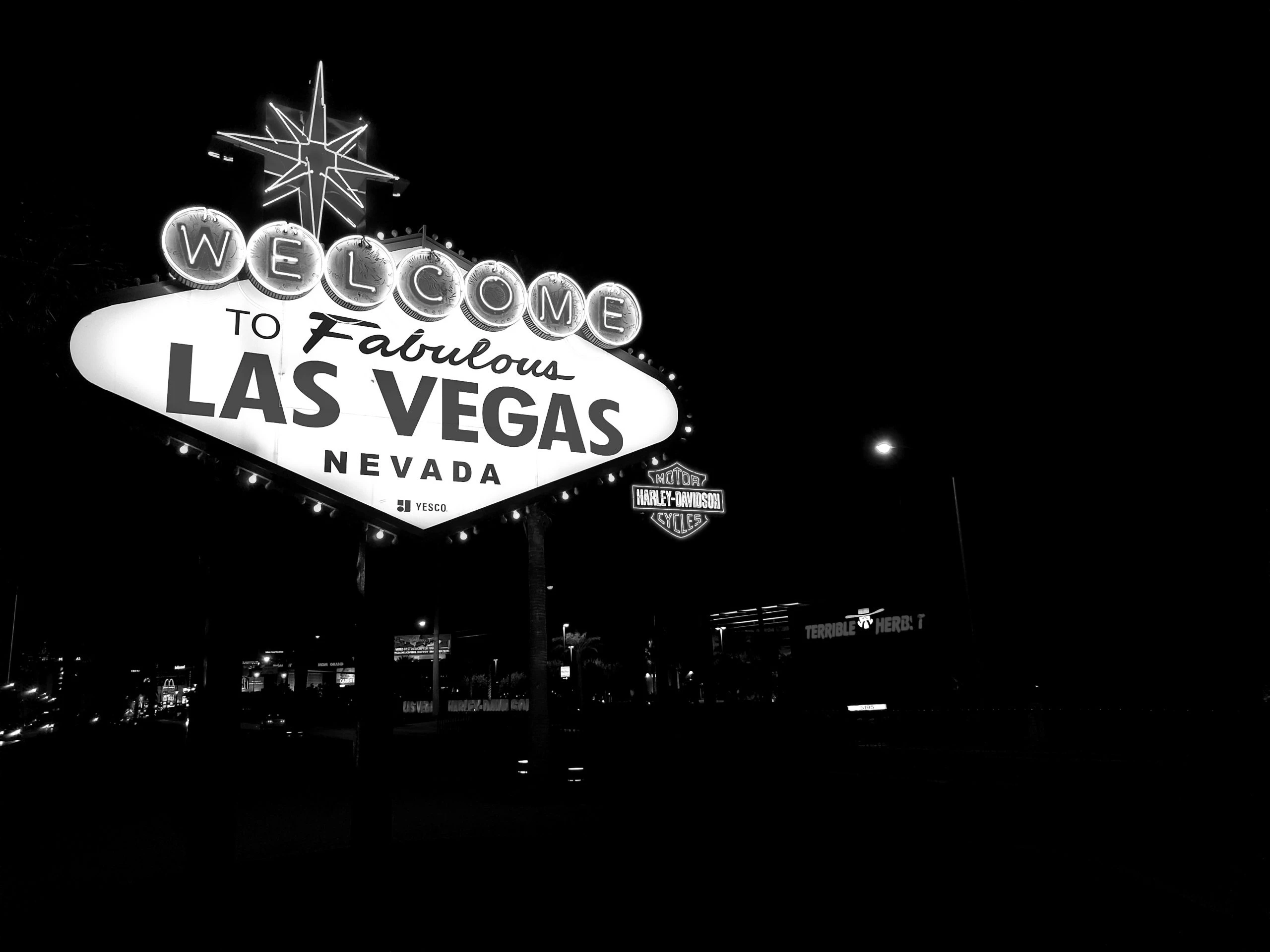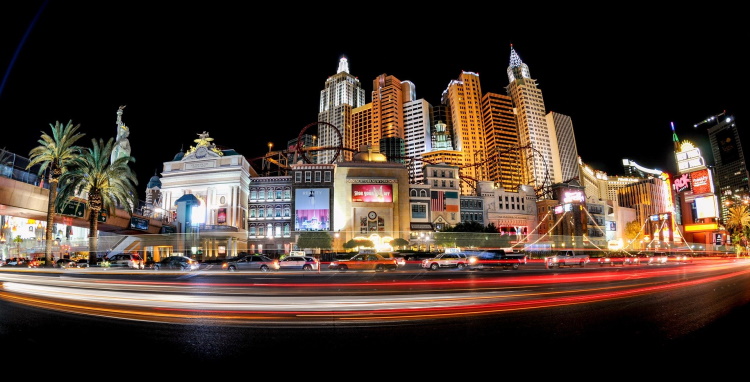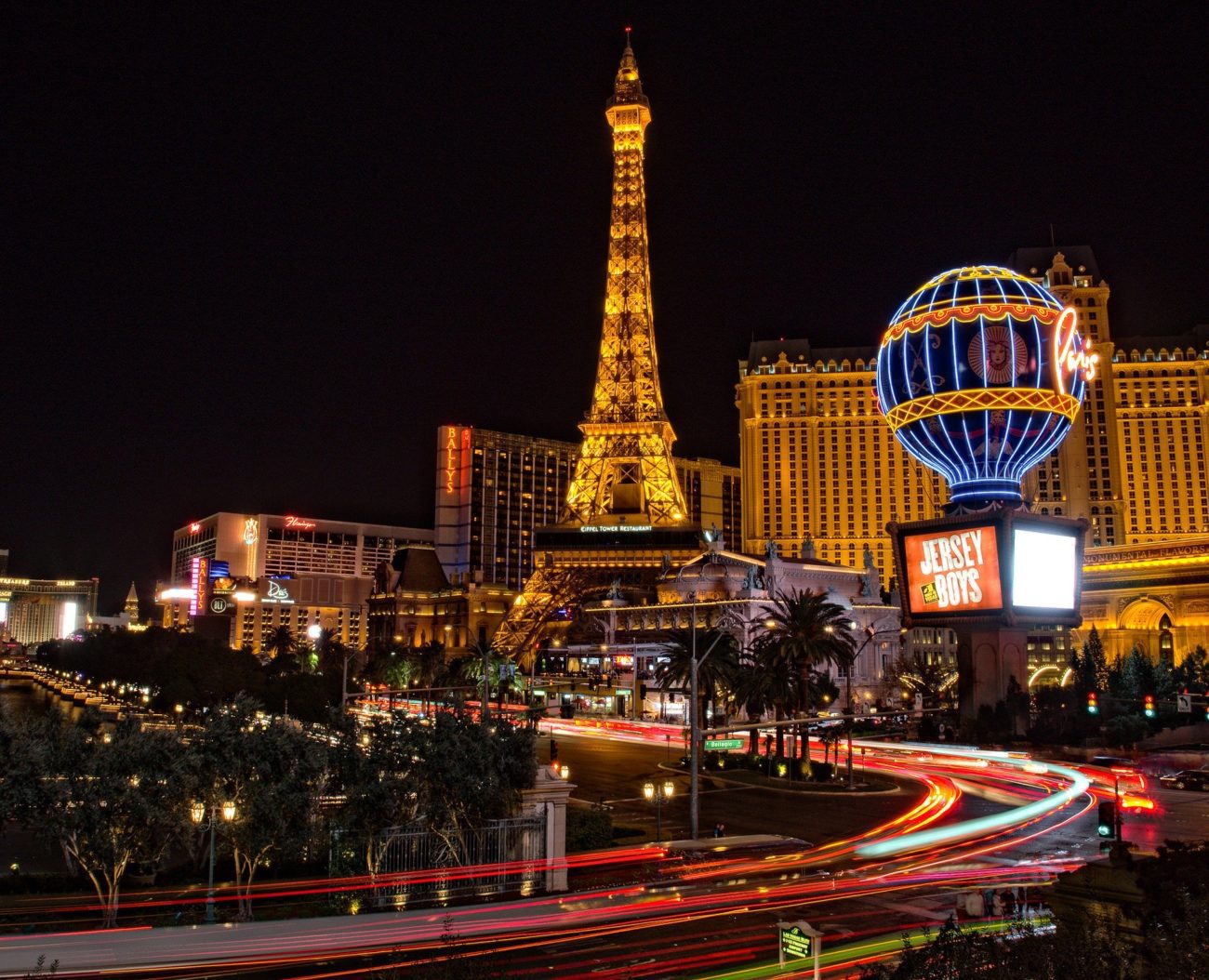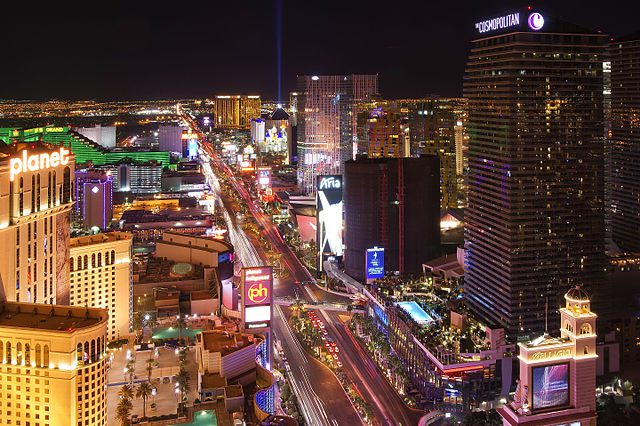Las Vegas attracting a younger, more diverse crowd

As visitors to Las Vegas continue to get younger and more diverse, it appears casino resorts have figured out how to lure their future generation of customers.
The Las Vegas casino industry has faced a lot of questions and concerns in recent years about what will happen as casino patrons age and whether younger patrons would replace them.
The answer to that question so far is yes as Nevada, led by the Las Vegas Strip, posted record gaming revenue in 2021 and again in 2022. The question is, can that continue or will Las Vegas casinos need to evolve more?

Las Vegas began focusing more on increasing revenue streams beyond gaming in the early 1990s with a greater focus on entertainment, food and other amenities such as retail, nightclubs and resort swimming pools.
The average visitor age has steadily come down since then. In 2022, it stood at 40.7, down from 43.2 in 2021, according to the latest visitor profile survey released by the Las Vegas Convention and Visitors Authority (LVCVA).
According to Oliver Lovat, CEO of the Denstone Group, who tracks visitation, the average age of visitors to Las Vegas was as high as 49.2 in 2010.
Millennials – those born between 1981 and 1996 and who were aged 26 to 41 at the time of the survey – made up 48% of the visitors in 2022.
Generation Z – those born between 1997 and 2012 – made up 13% of visitors, higher than the 12% of baby boomers born between 1946 and 1964.
Casinos’ gamble is paying off
In 2010, only 29% of Las Vegas visitors were under 40, Lovat says.
As visitors get younger, they are also more diverse, with Hispanics, Asians and Asian-Americans now making up a greater share of the visitor base. White visitors made up 77% of the total in 2019 before the pandemic. In 2022, that had shrunk to 62%.
Lovat calls the latest survey one of the “most interesting” he’s seen when looking at Las Vegas visitation in the last 20 years. The city is effectively engaging the needs and trends of customers by moving away from cheap rooms and inexpensive buffets, he adds.
“It’s validation for getting it right,” Lovat says of the Las Vegas casino industry. “The casinos took a big gamble five to six years ago on food and beverage and entertainment programming and making more experiential offerings for their customers and this is paying off.”
“Las Vegas has been the collective beneficiary of very smart moves, particularly by Caesars [Entertainment] and MGM [Resorts International] for not going for the cheapest option but investing in food and beverage and amenities. People have come and rewarded those companies.”
Andrew Klebanow, a principal with C3 Gaming, credits the effectiveness of the LVCVA’s advertising campaigns as well as the increase in the number and quality of the city’s entertainment offerings. One in four Las Vegas visitors were making their first trip to Las Vegas, up from one in five in 2021.
“Casino operators have also become very adept at moving their customers from casinos in high-tax jurisdictions to their properties in Las Vegas where the gaming tax is the lowest in the nation,” Klebanow says. “Using generous lodging offers, operators have gone deep into their databases and now invite broad swathes of players to visit Las Vegas.
“That in turn has fuelled an increase in first-time visitors and younger players who make up a growing percentage of their national databases.”
Since the onset of the Covid-19 pandemic in 2019, Lovat says Las Vegas is the place people want to come to do “fun things” with their friends.
“It’s been the outlet where America recovered and that’s evident in food and beverage sales, gaming and [show and sports] ticket sales.

“People aren’t coming to Las Vegas to gamble any more. They are gambling when they’re in Las Vegas. That older generation above 65 that were coming to Las Vegas to gamble are going somewhere else. It’s easier to gamble in so many other places.”
The changing needs of the consumer
Las Vegas is definitely more attractive to unmarried people. Sixteen per cent of visitors in 2018 were single, according to the survey. In 2022, the figure was 35%.
Lovat says Las Vegas has changed its offer to align itself more towards younger people. These days its restaurants, bars, clubs and shows are much more contemporary.
“If you look at who is playing the show rooms, it’s not boomers. It’s Adele and Bruno Mars. It’s fewer Chers and more Lady Gagas.”
The average visitor to Las Vegas spent $527 per visit on food and beverage in 2022, up from $415 in 2019. They spent $310 on shows and entertainment, up from $111 in 2019. Some 37% of visitors went to paid attractions – up from 28% pre-pandemic.
“The increase in food and beverage spending was also significant, reflective in large part on casinos’ pricing strategies,” Klebanow says. “Eating and drinking on the Las Vegas strip is no longer a bargain. Food and beverage pricing is higher than other vacation destinations. Twenty-dollar martinis and $75 steaks are now the norm in this town.”
That fits the narrative of where Las Vegas has trended ever since gaming revenue accounted for 58% of total revenue in 1990, the first full year of The Mirage, the destination that set the modern standard.
It was 50-50 in 1998 but non-gaming has trended up to two-thirds of revenue in the 20-plus years since, with the exception of when amenities were shuttered during the pandemic because of social distancing rules.
“Vegas has always adapted to its consumer,” says casino consultant Brendan Bussmann, managing partner of B Global Advisors. “When it relates to that younger consumer, we always want to fill in behind what we already have. Once you experience Vegas once, you are going to come back over and over again because it’s like an experience nobody else can match.”
Appealing to audiences
That doesn’t mean everyone thinks what Las Vegas is doing is enough to attract younger audiences.
The one change casinos need to do to appeal to the younger generations is adopt cashless technology on their gaming floors and across their properties, Lovat says. Casinos have been slow to adopt the emerging technology.
Some have suggested more needs to be done to get younger players to gamble, and that slots won’t cut it for them like they do with baby boomers and older generations. Lovat is among those who disagree with that premise based on the latest stats. The average visitor budgeted $761 for gambling during their trip in 2022. That’s up from $591 in 2019.
According to Bussmann the pandemic introduced younger generations to casino gambling as a “great form of entertainment” when other entertainment options weren’t available.
“Young people don’t gamble when they are young, but the more times they come and get familiar with the casino floor, the more they get familiar with the games,” Lovat says. “It takes the average customer eight times before they become a significant casino player.”
“The evidence suggests that during Covid young people started playing slots, and playing a slot machine now is very different from playing one 15 years ago. It’s more digital and a fun experience. It’s not watching lines go round and round.”
There’s still gambling improvement to be made, according to Josh Swissman, founder of The Strategy Organisation. Younger patrons are coming to Las Vegas despite some casinos “not getting it right yet” when it comes to gaming and despite there being no particular gambling game that resonates with them above others. Some day, that could be skill-based gaming or esports wagering, he says.
“It seems like the casino companies have been forcing the new customers to go to the casino floor instead of bringing the games to where these people tend to congregate and spend more of their time,” Swissman says. “That is the fundamental problem with the way these newer gaming floor offerings have been positioned up to this point.

“When you look at a generation that grew up with the internet, cell phones and rich video gaming experiences and if you continue to have that mentality in the future to capture the Gen Z population and the generation before then, you will find yourself being outgunned by the companies and manufacturers that are thinking of the gaming floor of the future in a completely different way.”
Swissman thinks it can be done. Casinos have got it right with nightclubs and dayclubs, food offerings with social seating and sharing options and new food halls that provide a variety of cuisines to satisfy a group of friends.
Innovate to accumulate
Corey Padveen, a partner with t2 Marketing International, says passive player income so far has proven to be critical among younger visitors who may be coming for reasons other than to gamble when they have a free moment.
Innovation will be critical to see how slots are able to cater more successfully to younger players, either through customisation or artificial intelligence.
“You are primed for a lot of innovation in the world of slots purely because it is critical to casino revenue and gambling revenue not just in the United States but globally,” Padveen says. “Getting young people to engage in slots is at the top of the list of priorities. Technology and innovation will be huge proponents of that.”
Technology and innovation are already being used to bring in younger visitors and casinos may need to mimic that. Area15 is an experiential retail and entertainment complex west of the Strip with food and beverage offerings. It features interactive art and other attractions.
“Those attractions are squarely targeted at the younger demographic,” Swissman says. “They have a food hall setting and significant nightlife offering. It’s become a confluence of factors that appeal to younger people even though it’s not on the Strip. And there are other paid attraction experiences up and down the Strip whether that’s the Banksy [art exhibit] or others.”
Ongoing recovery
Despite the strong showing in gaming revenue and overall spending, Las Vegas has not fully recovered its visitor numbers. Its 38.3 million visitors in 2022 were still 8.7% below the 42.5 million in 2019. Overall hotel occupancy reached 79.2% in 2022, down 9.7 points versus 2019.
“The occupancy numbers are down and nobody is concerned,” Lovat says. “It’s not about filling those rooms with cheap customers but getting the right people in the doors who can enjoy and pay for the experiences the casinos are offering. And if they’re not filling the building, they’re providing a better quality of service and better experience. Customers are rewarding them.”
The willingness to pay more in Las Vegas may account for one change in the survey among its customer base. Some 35% of customers in 2022 said they earned more than $100,000, up from 29% in 2019 and 2021.
Padveen says numbers in the survey show how casinos are making their properties bigger attractions so that customers don’t need to leave.

The average visitor went to 4.3 casinos in 2022, down from 5.7 in 2021, and they gambled at 2.2 casinos, down from 3.2 in 2021. That means more revenue staying on properties.
“That tells you that the diversification of offerings on property is improving from food and entertainment,” says Padveen, who cited properties now doing culinary and drinking tours and offering entertainment packages.
“You can take the food and beverage offering by enhancing it and creating comprehensive experiences around it. We’re seeing more and more of that. When you have a group like MGM or Caesars, you can create that across properties so people stay within that brand.”
Padveen says the decrease in age of visitors, the increase in first-time visitors, and the increase in spend on property is critical because gaming isn’t going to be the only reason people come to Las Vegas.
“There was a huge risk of the most lucrative visitor base not returning out of fear of safety from Covid,” he continues. “There was such a huge importance on providing an experience so that millennials and gen Z could come and create a product offering that extends to every avenue of entertainment while still having a focus on gaming.
“We saw in 2008 and during Covid that non-gaming revenue is critical to the momentum of growth, and you are seeing that on the individual property level and city as a whole that spells a lot of great potential moving forward. That’s what led to this huge investment in entertainment.”
Sports and entertainment a major pull
The survey points to people coming for an overnight stay or short visits for a concert or an NHL or NFL game and at the $2bn Allegiant stadium which opened in 2020.
Events at the Allegiant attracted 1.7 million people in 2022, 200,000 of whom paid to see K-pop sensations BTS over four shows. T-Mobile Arena, which opened in 2016 and where the Vegas Golden Knights play home fixtures, also hosts concerts. Las Vegas will host its inaugural F1 Grand Prix in November and the Super Bowl in February 2024.
“There’s no question having T-Mobile in the middle of the city is a huge driver of entertainment,” Padveen says. “I know a lot of people from California who have gone to Vegas for one night with the express purpose of going to a show.”
With the $2bn entertainment arena MSG Sphere opening later this year and F1 rolling into town, Padveen says there’s a diversification of entertainment experiences in the city that will yield huge returns with potential new visitors and visitors who haven’t come in a long time.
“Operators and marketing teams have been working on so many different ways to get these people to come back or come for the first time and now, thanks to the investments in the city and these operators for their efforts, you have offerings in the city as a whole that are going to be unique offerings to drive in people.”
